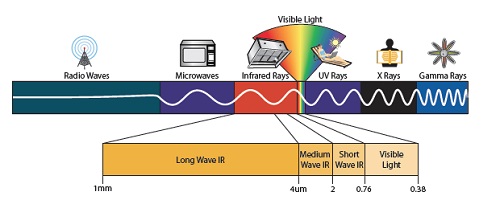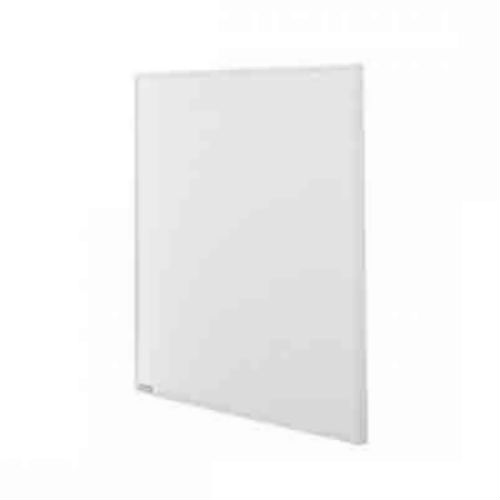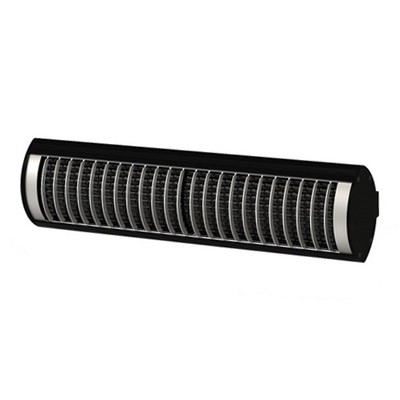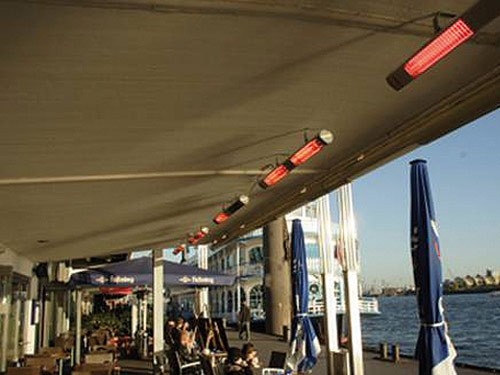Why are so many consumers turning to infrared heaters for their homes and businesses? They’re heating products that still mystify the majority of people but once you grasp their basic principle, their advantages quickly become apparent. Infrared heaters use radiation to warm people, surfaces and objects directly, providing a comforting sensation of heat that can be felt on a deeper level rather than through the movement of warm air. For the uninitiated, words like ‘infrared’ and ‘radiation’ can make these heaters sound a bit sci-fi, but in reality, their heating method couldn’t be more simple.
What is infrared radiation?
Infrared is part of the electromagnetic spectrum and its radiant heat is probably the oldest form of warmth known to man. Sources of heat from the dawn of civilisation have employed this method to some degree or another, whether it’s been heat from the sun, the glow of a bonfire or even the warmth created by our common household radiators. In one way or another all heaters will give off some amount of infrared heat and the same is true for our bodies. We all emit and absorb radiant heat constantly and thermal imaging cameras work entirely on this principle. Warm living objects emit infrared radiation, which is displayed in thermal imaging as white, red and orange. On the other hand, inanimate objects that absorb and emit less infrared radiation will how up as blue or purple.

 How does infrared work?
How does infrared work?
Think of standing outside on a sunny day – the ambient air temperature might only be 13 °C, but the warmth from the sun’s rays can make it feel as balmy as the early days of summer. Then, when the clouds go in, it will suddenly feel much chillier than it did previously because all of the radiant heat provided by the sun’s rays has been blocked out.
Infrared radiation doesn’t rely on the movement of air to take effect but instead passes directly through it until it reaches a solid object. This allows an uninterrupted transfer of heat from the source to the object without the need for a medium in-between. In sharp contrast, convection heaters require the movement of warm air to act as the middleman when transferring warmth from the source to objects within the room. Not only is this an incredibly inefficient process in and of itself but it’s also prone to draughts and breezes which can quickly dissipate any accrued warmth.
Infrared heating systems fill a gap in the market that few other heaters can match. They provide direct heat, discreet product housings and a whole range of models tailored to both indoor and outdoor applications.
Infrared heating panels – effortlessly stylish heating for the home
 Infrared panels are designed to deal with many common complaints surrounding traditional heating methods in the home. Take your average central heating radiator – most standard models aren’t exactly pretty and they certainly do take up a lot of wall space. It’s a pain to relocate them if you decide to adjust your room layout and they’re often bulky items that can eat up precious space. In comparison, infrared panels are as slimline as a picture frame and exceptionally elegant even with a plain white finish. They can be mounted almost anywhere from the walls to the ceilings and can be used free standing if necessary.
Infrared panels are designed to deal with many common complaints surrounding traditional heating methods in the home. Take your average central heating radiator – most standard models aren’t exactly pretty and they certainly do take up a lot of wall space. It’s a pain to relocate them if you decide to adjust your room layout and they’re often bulky items that can eat up precious space. In comparison, infrared panels are as slimline as a picture frame and exceptionally elegant even with a plain white finish. They can be mounted almost anywhere from the walls to the ceilings and can be used free standing if necessary.
What differentiates panels from other heaters in the infrared range is the type of radiant heat they emit. They use far infrared radiation which has a longer wavelength and provides a gentler form of heat that the body can easily absorb. Far infrared heating provides higher comfort levels for long-term use and pleasant direct heat that’s quick to get going. Infrared panels are incredibly low-key heaters that blend into the background but if you’d prefer your heat source to be completely hidden from view, mirror panels are also available.
Quartz heaters – powerful outdoor heating solutions
The reason infrared panels don’t get used in outdoor applications is because the form of radiation they use isn’t powerful enough to off-set the much colder temperatures felt outside. Instead we need to look to a different form of infrared heating to provide us with the answer. Quartz or halogen heaters use near infrared to provide an intense radiant heat designed to fend off the cold and make patios and gardens usable throughout the year.
What’s immediately noticeable about these heaters is that they produce an orange glow that provides a cosy additional light source as the evening light begins to fade. If you find the glow of a standard quartz heater a little too harsh on the eyes, there are plenty of ‘low glare’ products available on our site that are purpose built to reduce this visual effect. Low glare heaters work by using a form of infrared that has a longer wavelength on the spectrum, and the longer the wavelength, the less visible light that’s produced. Though low glare heaters might not look as intense as a glowing halogen heater, they still have all the vigour needed to keep you warm while you use your patio.
Most quartz heaters can be wall mounted in a convenient spot, pointed toward your outdoor seating areas, or you can even find free standing models available for occasions where you might want to position them as you like. They’re not just fantastic for domestic outdoor heating; these patio heaters also work wonders for commercial applications and can transform any chilly restaurant terrace into an inviting alfresco dining area. Check our fantastic range for commercial sized heating solutions, as well as heaters that provide 2-in-1 heat and light.
Ceramic heaters – the best of both worlds
 Ceramic heaters combine a gentle heat similar to far infrared products with a higher intensity more closely associated with quartz heaters. They’re best suited to use within industrial or commercial settings that need to have a heat source suitable for long periods of use but with the necessary strength to project out over a wider area. These heaters take their name from the robust ceramic heating elements they use and are specially engineered to conduct and emit heat as effectively as possible.
Ceramic heaters combine a gentle heat similar to far infrared products with a higher intensity more closely associated with quartz heaters. They’re best suited to use within industrial or commercial settings that need to have a heat source suitable for long periods of use but with the necessary strength to project out over a wider area. These heaters take their name from the robust ceramic heating elements they use and are specially engineered to conduct and emit heat as effectively as possible.
Most ceramic heaters can be wall mounted and angled toward areas of the room that need a dedicated heat source. However, some larger ceramic heaters are designed to be ceiling mounted for spaces that need an industrial heating solution. Our hardy ceramic heaters come in a range of wattages for workspaces of all sizes, no matter whether you need to heat a home workshop or a spacious car showroom. These heaters don’t create any visible light as they fall within a mid-range wavelength that’s much closer to far infrared compared to standard quartz or low glare heaters. This makes them a more discreet heating option suitable for a range of indoor applications. Some models can even be used as an outdoor heater depending on their IP rating so they really are the all-rounder of infrared.
Comfortable, lasting heat
 Infrared has repeatedly proven to be an effective heating solution for difficult to heat rooms and open plan spaces. It doesn’t matter whether it’s a humble box room, a garden dining area or even a warehouse – infrared products come in so many shapes and sizes that they provide heating solutions for virtually any space imaginable. Compared to many other traditional heating methods, infrared products are exceptionally low maintenance and their radiant heat is so effective that users will often find they can set their thermostats a little lower than usual and still feel adequately warmed. Don’t suffer with chilly rooms when infrared can provide you with energy-efficient heating straight from the heater to you.
Infrared has repeatedly proven to be an effective heating solution for difficult to heat rooms and open plan spaces. It doesn’t matter whether it’s a humble box room, a garden dining area or even a warehouse – infrared products come in so many shapes and sizes that they provide heating solutions for virtually any space imaginable. Compared to many other traditional heating methods, infrared products are exceptionally low maintenance and their radiant heat is so effective that users will often find they can set their thermostats a little lower than usual and still feel adequately warmed. Don’t suffer with chilly rooms when infrared can provide you with energy-efficient heating straight from the heater to you.
Image sources:
http://www.universalray.com/img/electromagnetic_spectrum.png
